This is the Jimmy Stewart of soup pots — tall and skinny and quite charming.

- Type: Tin-lined soup pot in hammered finish with brass handles fastened with three copper rivets
- French description: Bain à potage étamé et martelé avec poignées en laiton munies de trois rivets en cuivre
- Dimensions: 14cm diameter by 23cm tall (5.5 inches by 9.1 inches)
- Thickness: 2.5mm
- Weight: 2622g (5.8 lbs)
- Stampings: “E. Dehillerin 18 Rue Coquillière”; “Hotel de Paris”
- Maker and age estimate: Dehillerin; 1880–1900
- Source: Etsy
This soup pot is particularly tall for its narrow diameter. In fact, it’s the same height as my recent-era 18cm Mauviel soup pot, four centimeters wider, shown below on the left. (This is also a chance to show a modern-era handle next to an antique-style handle so you can get a sense of the styling differences.)

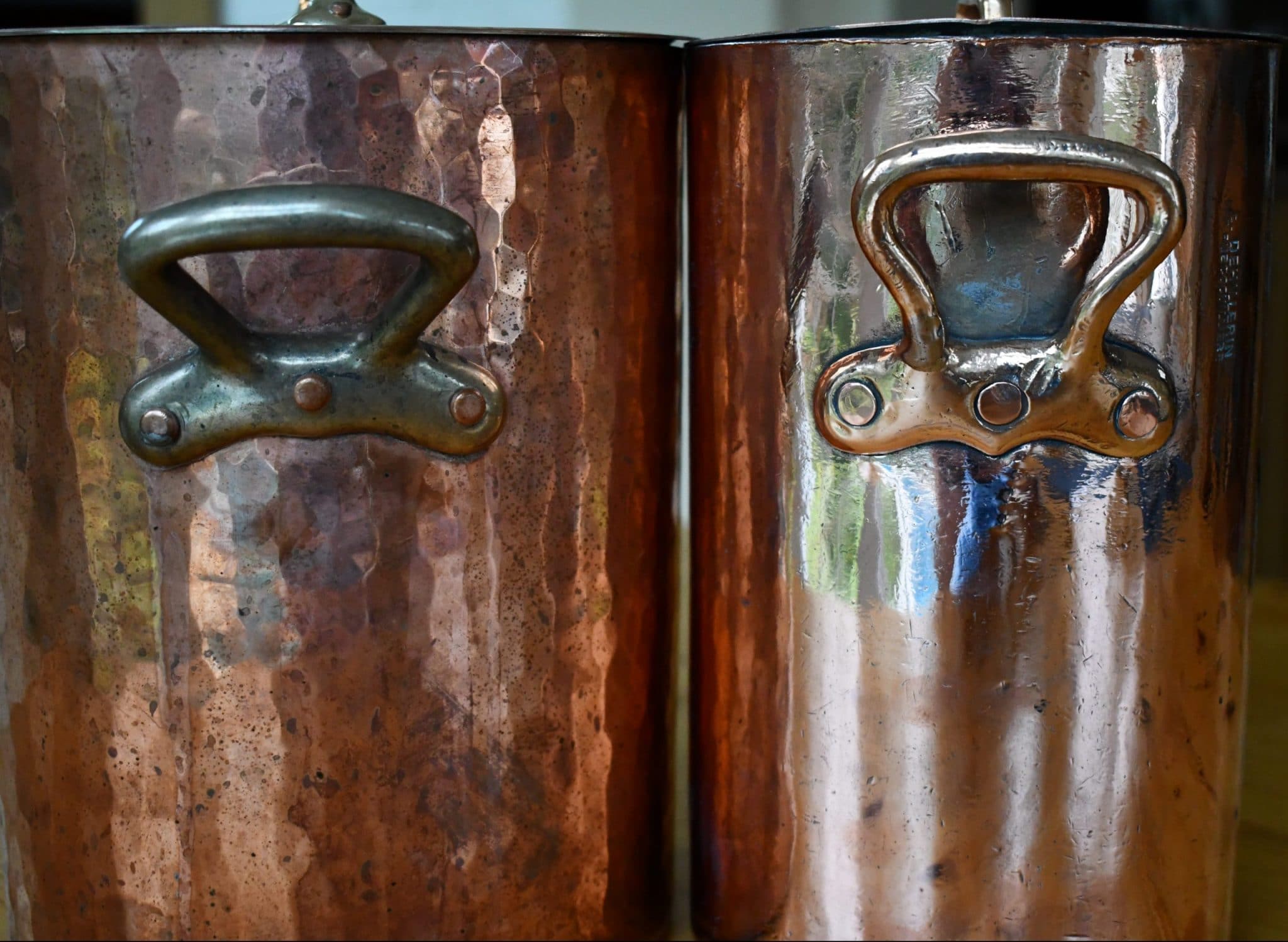
At 2.5mm thickness, this little pot is the same thickness as the larger Mauviel, contributing to its sense of heft for its size.

With these dimensions, this Dehillerin pot seems suited for only a few specific tasks on the cooktop. It is just wide enough for a ladle but too narrow to maneuver a skimmer; my guess is this was used for a broth that needed to be clarified, such as a consommé. The depth of this pot would have allowed solids to settle at the bottom, leaving several inches of clear broth at the top.
I have other plans for it.
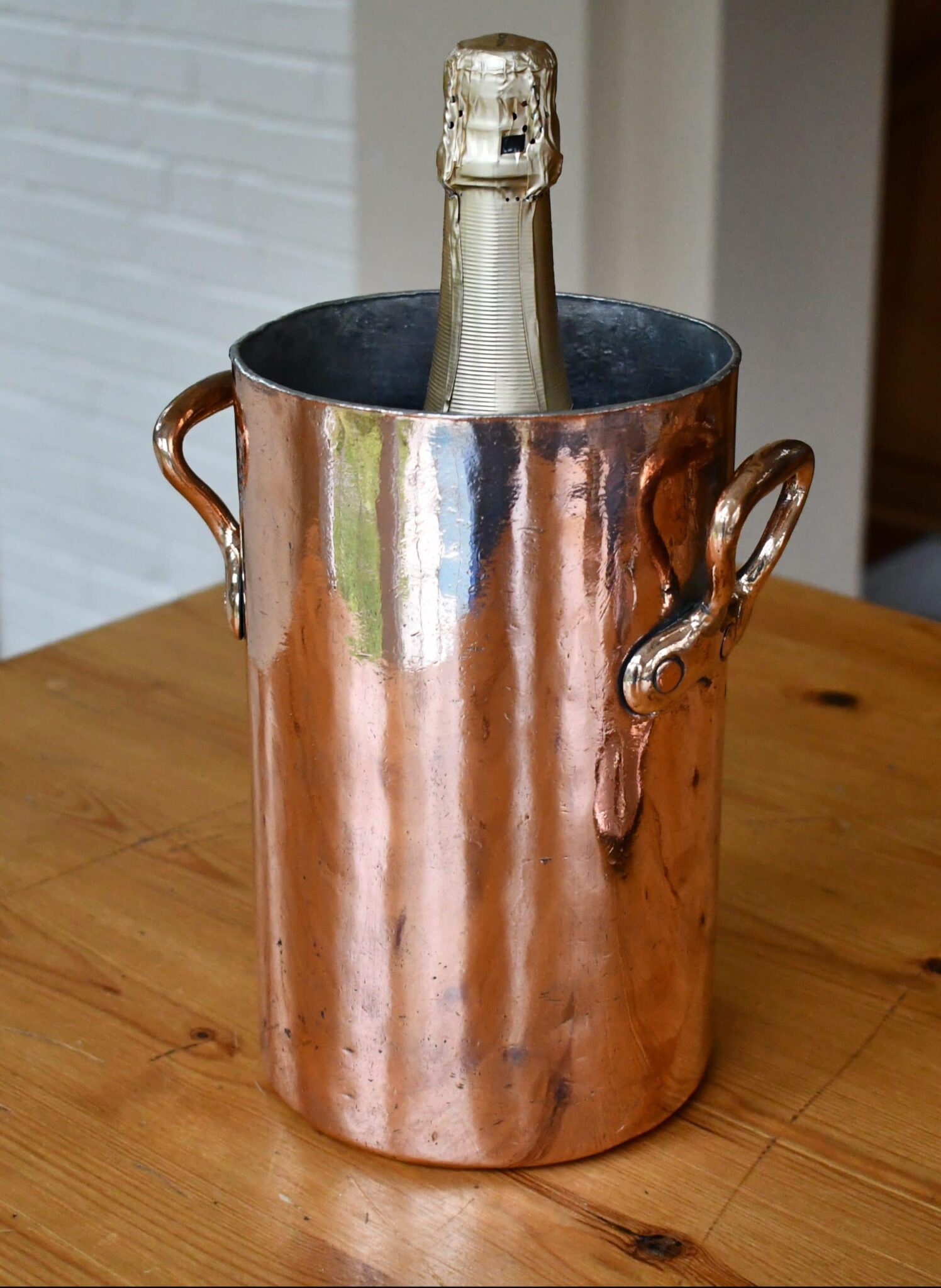
All kidding aside, copper pots do make festive wine and champagne coolers. They are not double-walled so they will accumulate condensate on the exterior, so be sure to place them on a plate or a surface that won’t be damaged by water.
I believe this pot dates to the late 19th century based on multiple factors in its construction. It carries two stamps: one for E. Dehillerin with the full street address. I believe this type of stamp dates to the period of time when the store maintained its own chaudronnerie. (This is a new version of Dehillerin stamp for my collection and I shall have to update my field guide accordingly.)
The second stamp is for the Hotel de Paris. I have been less successful isolating exactly which hotel this could have been, as there are several over time with this popular name. One candidate could be the Hotel de Paris de Monte Carlo in Monaco, which opened in 1863; another possibility could be the Hotel de Paris in Cromer, in the Norfolk region of England, which was opened in 1830 by a French family that had fled the Revolution. And of course there would have been many more hotels of this name of lesser reputation, perhaps, but with a taste for professional quality French copper.


It is handmade. It has a long dovetail seam up one side as well as a seam around the base. These yellow seams indicate that the pot was pieced together from sheets of copper and the seams were brazed, not welded.


And it also has the dot at the center of the base. As I am inordinately fond of pointing out, the dot is an artifact of hand construction. It shows the point of the compass used to mark the diameter of the copper disk for the base, meaning the pot was made without machinery to cut copper sheets, most likely during the late 19th century.


I sent this pot to Erik Undiks at Rocky Mountain Retinning for restoration and he did a marvelous job as always. Here are a few before and after photos of the exterior. He is able to polish it in such a way that does not eradicate the surface character of the copper.
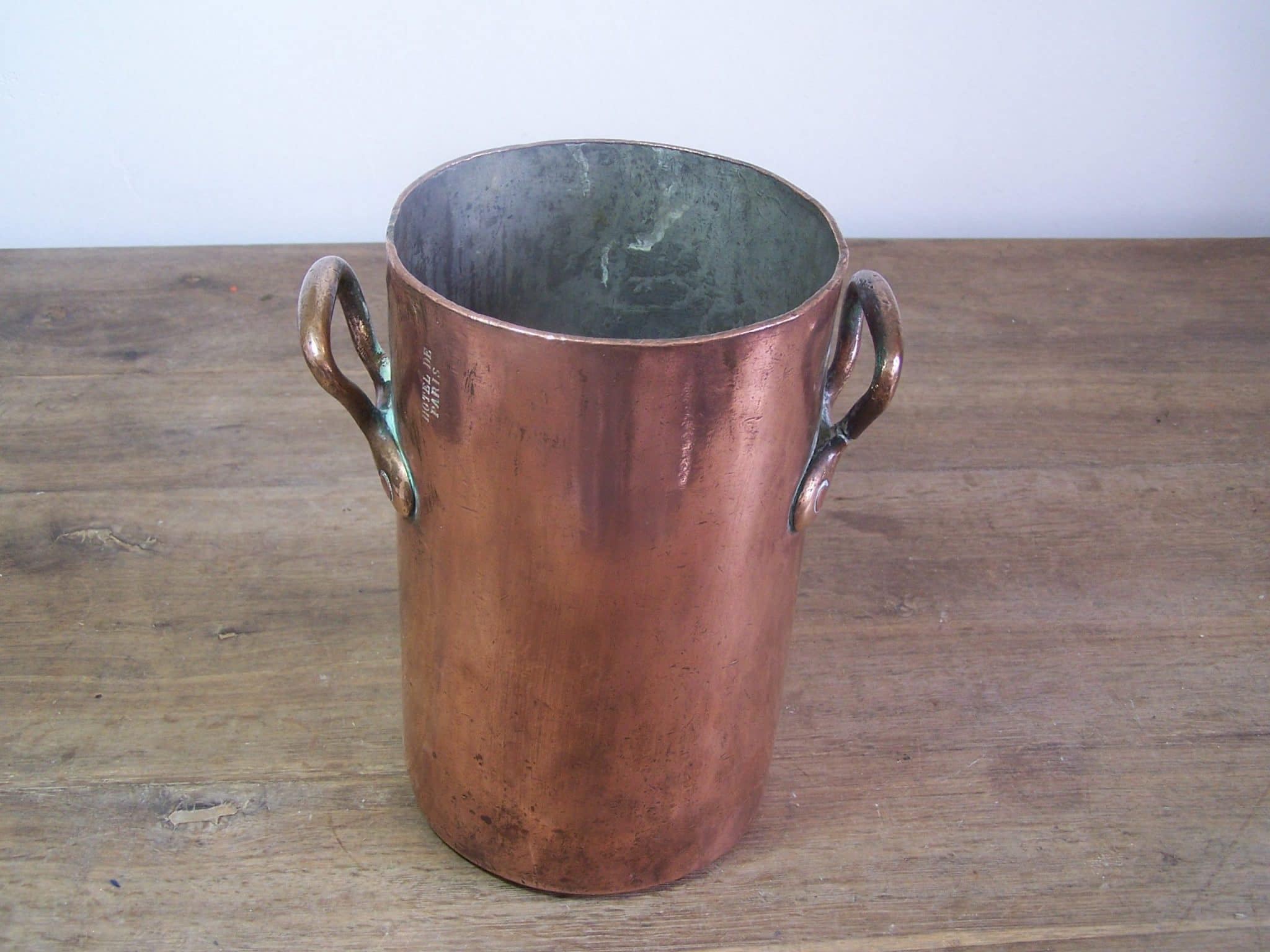
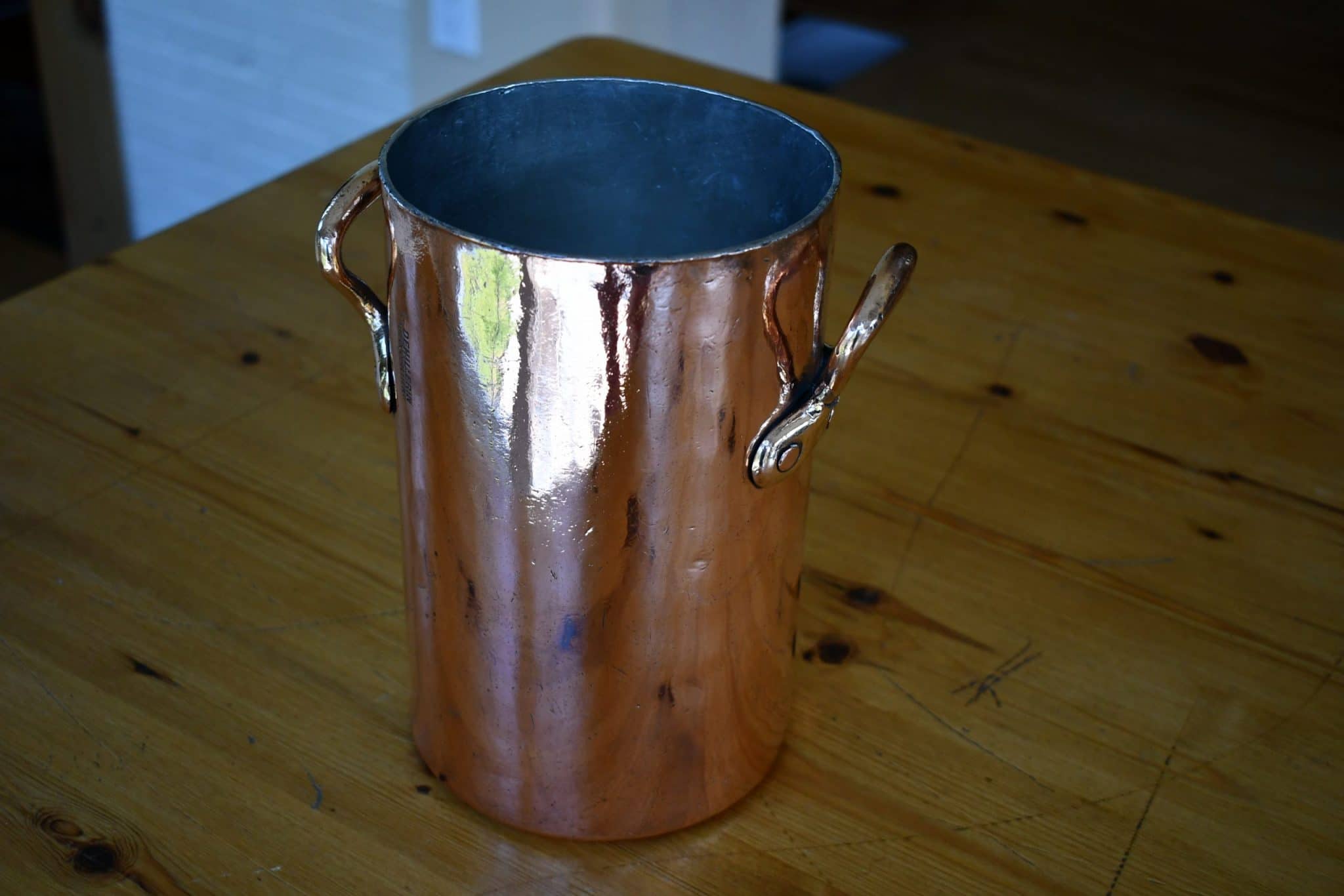
And he does very skillful work with the interior tinning. He has to get his hand inside this cylinder to wipe hot molten tin completely and evenly around the entire surface. Erik is a master at this work — look at the clear shine he is able to achieve.


This pot did not come with a lid, and I set myself the task to find one. In order to match this pot’s style, I wanted a fitted lid with a brass handle, and it took me a while to find one in this small 14cm diameter. The fit is a little imperfect, as the Dehillerin pot may be slightly out of round, but I’m happy with it.

I was fortunate to find one on eBay, stamped for Bazar Français in New York. This lid is certainly 20th century work, likely 1950s or later, but it suits the pan just fine.
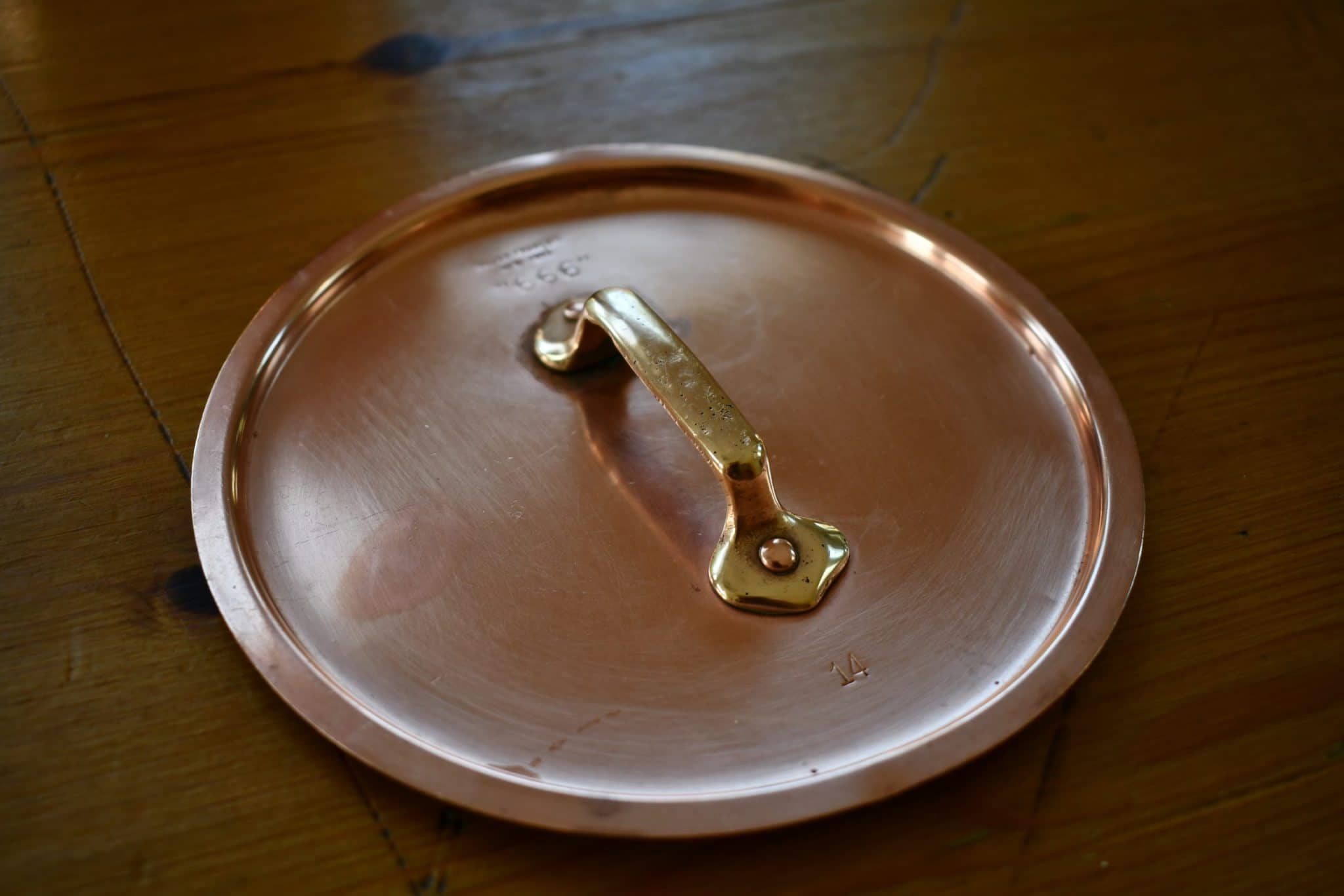

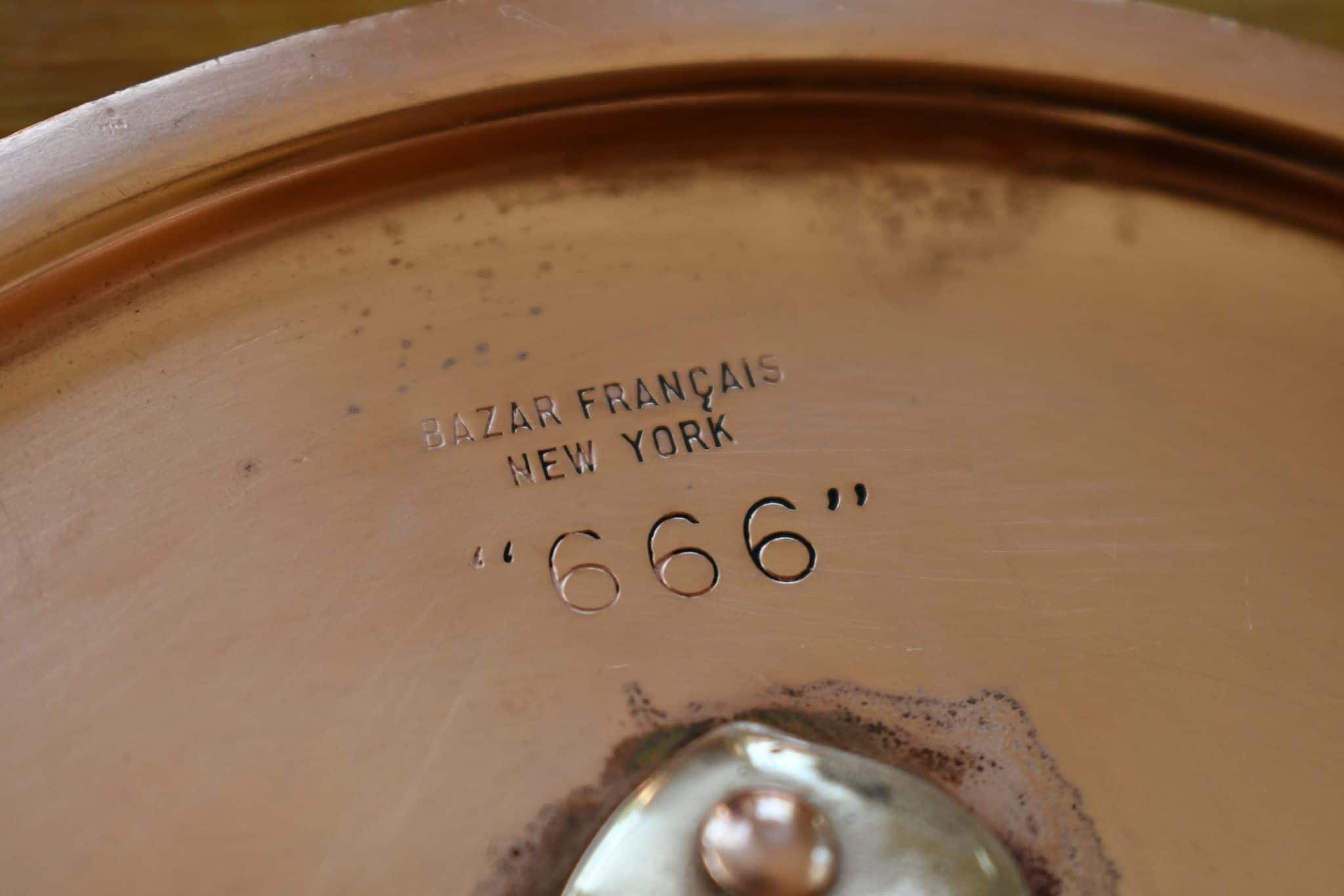
I’m happy to have this little pot, especially in such nice condition.






Hi VFC,
Love your site. Learned a lot, no learned everything I know on copper cookware, on it.
Charming little pot indeed. Its extreme narrowness however makes me strongly suspect it is missing an interior mesh basket and would have been described by Dehillerin rather as a cuiseur à asperges (asparagus pot) than as a bain à potage.
Cheers
Hey 2B — What an insightful observation! It didn’t even occur to me but you are so right — this pot has the same proportions as a similar one I have from Demeyere, in steel, with an interior basket. But I have never seen an antique one (or even one in copper). Do you know when Dehillerin began offering them?
Hi VFC,
I guess that Dehillerin began offering such asparagus cookers most likely during the late 19th century (but everything that I know about copper cookware comes from your site, so ……;-). In any case, I wonder when they stopped selling them…
I stumbled on a charming video from 1966 where Julia Child explains how to cook and eat asparagus and presents various pots she uses ( http://openvault.wgbh.org/catalog/V_B0D9EDA444FC425C8932E0BE8198AAA5 ). One of them is an enameled cooker/steamer similar in dimensions and shape to your stylish 19th century copper number. Cheers
Thanks for linking to that awesome video. I will have to keep an eye out for an antique mesh insert!